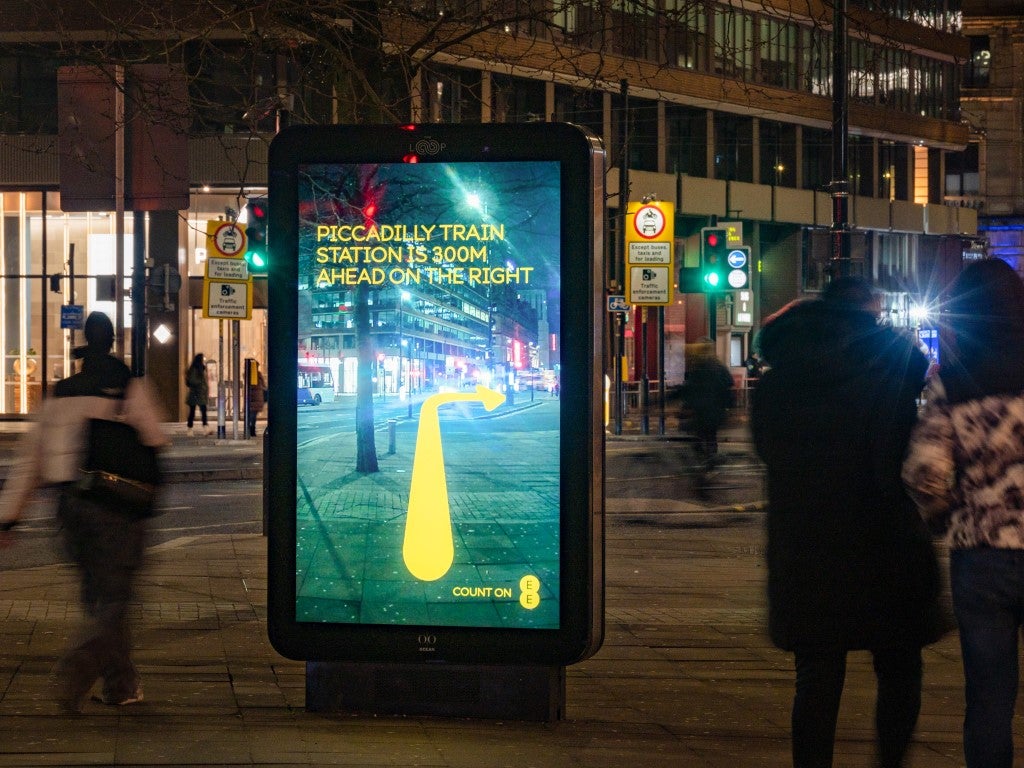
OOH & Social : a dynamic duo for reaching Gen Z
OOH and social are natural allies, working together to bridge offline and online experiences.
Brands have always sought to influence consumer behaviour through targeted campaigns.Whether targeting all adults or Gen Z, there’s one goal: effective, efficient communication.
But as the media landscape continues to fragment reaching consumers, especially digital natives like Gen Z, has become more challenging. Among the constant change, one medium has remained relevant and powerful: OOH.
Trusted, visible and creative, OOH has stood the test of time, evolving alongside shifts in media consumption.
And today, its relationship with social media has turned OOH into a vital partner for brands wanting to engage Gen Z, not just through reach, but through authenticity and community.
Audience reach
As the media environment grows ever more complex and cluttered, OOH continues to punch above its weight. Les Binet highlighted this at Touchpoints 2024, commenting: “Outdoor is the only channel to reach everyone.”
In an age where media consumption is increasingly personalised and on-demand, that scale matters. But reach is only the beginning. When Dentsu and Lumen examined media attention across platforms, they found that OOH, YouTube, and social media scored highest for visibility and attention, averaging 85%.
In contrast, digital display ads trailed, with just 9% of desktop and 32% of mobile ads attracting actual views.
For Gen Z, attention isn’t earned easily. Raised on a diet of fast content and hyper-personalised feeds, they’re adept at filtering out what doesn’t feel authentic. Yet OOH offers something different: a real-world experience that can’t be skipped or blocked.
Nielsen found 59% of Gen Z trust OOH ads more than other traditional media due to its public, non-intrusive presence. This trust aligns with how Gen Z relates to brands. Above all, Gen Z values transparency and relevance. They’re quick to call out inauthenticity and gravitate toward brands that align with their beliefs.
Social media remains their primary habitat, but when paired with OOH’s presence in physical spaces, the result is a seamless blend of real-world and digital experience.
Medium compatibility
OOH and social media are natural allies, especially in the way Gen Z lives.
With smartphones always in hand, this generation uses social media not just for entertainment, but discovery, commerce, and connection. According to the 2024 Sprout Social Index, 90% of Gen Z say a brand’s social presence impacts whether they trust it.
OOH supports this ecosystem, acting as a bridge between online and offline experiences. Posters advertising events or product launches don’t just raise awareness, they spark social interaction, encourage scanning of QR codes, and drive real-time engagement.
When content is relevant, it moves people and often, it moves them online. Digital OOH (DOOH) supercharges this synergy further.
Its ability to serve data-driven, location-specific content means brands can meet Gen Z in the right moments, whether outside a pub, in a shopping centre, or at a football stadium.
EE’s award-winning “Stay Connected” campaign exemplified this perfectly, using DOOH in Manchester nightlife hotspots to display real-time travel options, mimicking smartphone behaviour and providing real, practical value.

DOOH mirrors the short-form, high-impact content Gen Z prefers on TikTok, Instagram, and Snapchat. It uses humour, bold visuals and cultural relevance to spark emotion, be it laughter, surprise or FOMO. That’s the same formula that drives social sharing.
Creative synergy
Great campaigns work when there’s cohesion across platforms. When messaging, tone and visual identity carry from billboard to feed, it reinforces trust and elevates engagement.
Take Universal’s campaign for The Grinch. Billboards in US cities featured witty, hyper-localised messages that resonated with younger adults. The campaign triggered a wave of social media discussion and boosted ticket sales among 18 – 24s by 50% compared to previous animated films. The creative was clever, the execution was authentic, and Gen Z took notice.
Youth-oriented brands have embraced this synergy. Spotify tapped into meme culture using user playlist data to craft humorous OOH that naturally flowed into social.
Adidas used QR codes and influencer-driven billboards to spark a viral effect.
Nike’s 3D DOOH activations created shareable experiences that blended purpose-led messaging with jaw-dropping visuals.
UK-based Surreal Cereal’s “Fake Celebrity” billboards are another great example. Bold, irreverent and unmistakably authentic, they generated debate and shares across social platforms, particularly TikTok. The brand didn’t just advertise, they started a conversation.
Meanwhile, Apple’s “Shot on iPhone” campaign reversed the dynamic: curating user-generated social content and elevating it to premium OOH placements. It was simple, consistent and powerful and precisely the kind of user-first approach Gen Z respects.
Trust, community and the future of OOH
OOH’s resurgence as a Gen Z-friendly medium is no accident. In an age of fragmented attention, trust and community carry more weight than ever.
OOH delivers visibility, credibility and cultural resonance, and when paired with social media, it becomes an engine for authentic engagement.
Ultimately, Gen Z reward brands that respect their intelligence and speak their language.
When OOH and social media come together with a unified, creative approach, brands don’t just get noticed, they get shared. And for marketers who want to reach this next generation, that’s the real win.